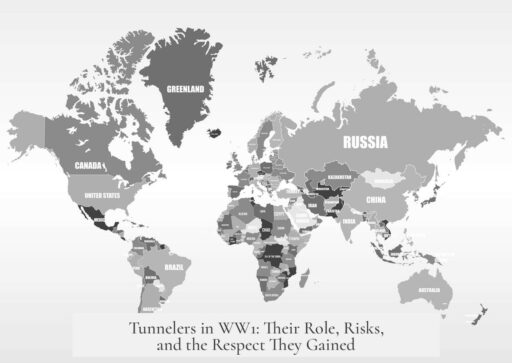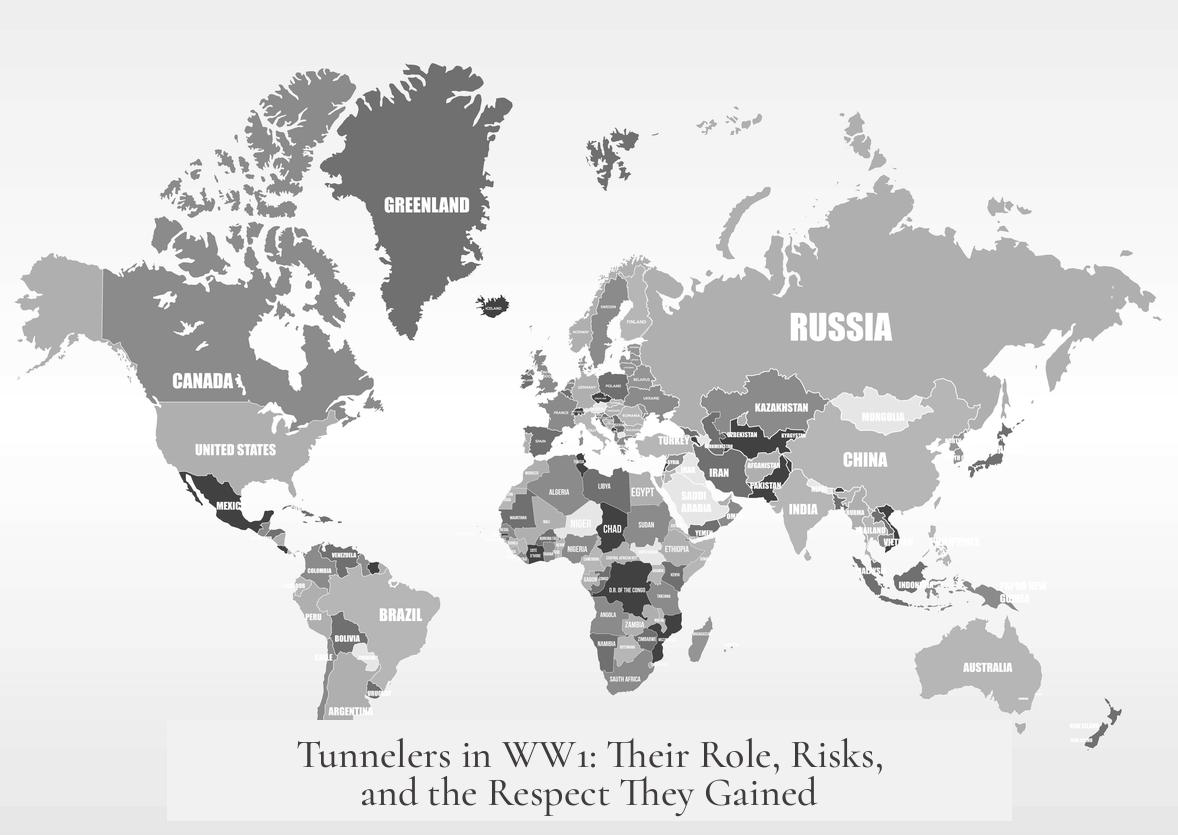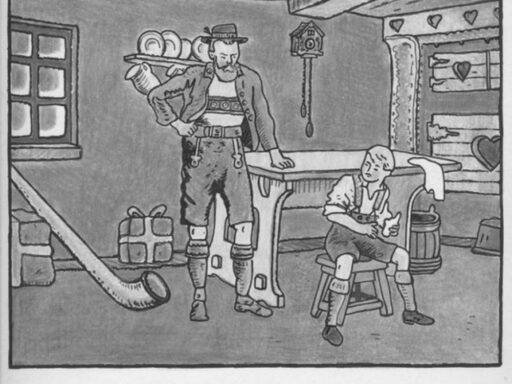The tunnelers in World War I were specialized soldiers, primarily from mining and underground construction backgrounds, responsible for underground operations such as mining enemy trenches, building dugouts, and creating protected troop movement tunnels. They earned high respect for their skilled work and extreme bravery, given the immense dangers they faced below ground.
Tunnellers played a crucial role beyond simple mining. They constructed large dugout complexes that sheltered hundreds of men. Their subways allowed troops to move undetected and launch surprise attacks near enemy lines. The tunnelling effort combined engineering skill and military strategy to support offensives and defensive operations.
The British initially started defensive mining to counter enemy tunnelers. As the war progressed, they shifted to offensive mining. This required men with specialized skills. The Royal Engineers recruited miners, sewer workers, and London Underground workers with little to no military experience. For instance, sewer workers from Manchester were quickly trained and deployed to front lines within days. This rapid expansion reflected the urgency and importance placed on tunnelling.
Mining operations began with sinking a deep shaft from friendly trenches, installing air pumps in shaft houses, and driving narrow galleries toward enemy tunnels underground. The work demanded extreme silence to avoid detection; opponents constantly listened for digging sounds. Once under enemy lines, miners dug explosive chambers packed with large charges. These were detonated electrically to destroy enemy trenches at critical moments, often at the start of major attacks.
Despite its technical nature, tunnelling was extraordinarily hazardous. The men faced natural threats like tunnel collapses and poisonous gas buildup. Combat dangers added a brutal dimension—enemy tunnelers might set explosive camouflets to destroy opposing tunnels or engage in vicious hand-to-hand fights underground before detonating charges to kill or trap their foes. These perilous conditions made tunnellers uniquely courageous.
“The horrors faced by Tunnelling Companies as they worked beneath battlefields reveal why those who understood their work held them in deep respect.”
As the war grew more mobile, tunnelers’ roles expanded to clearing booby traps, gas shells, and unexploded ordnance on the surface. Their technical skill and bravery remained vital until the end.
The offensive tunnelling war started in December 1914 with German mining operations under Allied trenches. Their use of explosive charges behind enemy lines allowed infantry to gain ground. British tunnelers soon matched this with their own mining campaigns, displaying superior engineering and tactical effectiveness.
Field Marshal Douglas Haig praised the tunnellers’ contributions, recognizing their superiority over German miners. In a message upon disbanding the tunnelling companies after the Armistice, he lauded their technical mastery and fighting spirit. Haig credited them with playing an essential role in key battles such as Messines, the Somme, Arras, and Ypres, highlighting their military engineering excellence. He also emphasized their dangerous work in clearing enemy traps, deserving widespread thanks for aiding the Allied victory.
| Aspect | Description |
|---|---|
| Who they were | Men with mining or underground work backgrounds, recruited by British Royal Engineers |
| Primary tasks | Mining enemy trenches, building dugouts, subways, and explosive chambers |
| Recruitment | Coal miners, sewer workers, and London Underground workers with quick military training |
| Dangers faced | Collapse, gas, enemy underground combat, camouflets, and booby traps |
| Key recognition | Field Marshal Haig praised their military skill and vital role in major battles |
- The tunnelers were essential military engineers working underground to gain tactical advantages.
- They combined civilian mining skills with military objectives, recruited rapidly based on experience.
- Their work involved high risk from structural hazards and enemy underground warfare.
- Field Marshal Haig recognized their superiority and important contributions to key Allied victories.
- Respect stemmed from their technical skill, bravery, and the vital impact of their operations under dangerous conditions.
Who Were the Tunnelers in WW1 and Why Were They So Respected?

The tunnelers in World War 1 were specialized men who worked underground to carry out mining operations beneath enemy lines, build dugouts, subways, and carry out sabotage missions. They were respected due to the extreme danger they faced, their superior technical skills, and the critical role they played in several pivotal military offensives. Now, let’s dig a little deeper — pun intended — into who these men were and how their work shaped the war underground.
When you think of WW1, images of mud, trenches, and machine guns come to mind. Few envision the hidden battlegrounds underfoot. Yet, these subterranean operations were crucial. The men who performed this work, known as the tunnellers, formed special Tunnelling Companies under the Royal Engineers. Their mission? To tunnel beneath enemy lines, lay massive explosive charges, and create underground shelters that helped thousands survive and launch attacks.
The Vast, Unseen Role of Tunnelers
Their responsibilities went far beyond explosive mining. While mining was their headline act, tunnelers also constructed elaborate dugout complexes. These underground shelters could hold up to 600 men safely below the open battlefield’s chaos above.
Subways were another engineering marvel of theirs. These were gigantic underground corridors that allowed large groups of troops to move secretly close to enemy trenches, often equipped with hidden exits into no-man’s land. At the perfect moment, these exits would be blown open, letting soldiers charge forward literally from below the enemy’s feet.
The Perilous Work Environment
The horrors the men faced were staggering. Imagine working in cramped tunnels dug deep underground with little light and fresh air. The threat of cave-ins, carbon monoxide poisoning, and enemy attack hovered constantly.
One of the deadliest dangers was enemy counter-mining. Both sides dug tunnels toward each other, listening carefully for the faintest sound. If an enemy was detected nearby, invisible at the time, brutal hand-to-hand combat could erupt within the dark tunnels followed by the terrifying setting off of camouflets — underground explosion charges designed to collapse enemy tunnels.
This work wasn’t just dangerous, it was psychologically exhausting. Working silently in pitch-dark, smelling gas, and knowing an enemy might be mere feet away required nerves of steel.
Where Did These Tunnelers Come From?
Initially, the British Army had only a handful of trained miners designated for defensive tunnel work. However, once the Germans launched their own offensive mining attack in December 1914, detonating explosive charges under the Indian Army’s trenches and causing significant damage, the British realized they needed to step up their game.
Mining was no longer just defense. They had to go on offense too. With the specialized Royal Engineers already overstretched, the army sought out men with civilian experience. Coal miners, London Underground workers, and sewer workers were suddenly transformed into frontline soldiers below ground.
One notable example: Manchester sewer workers went from their city’s sewers to digging lethal tunnels beneath battlefields in less than a week. This rapid recruitment enabled the swift expansion of tunnelling companies.
Field Marshal Haig’s Resounding Praise

When the war ended and these companies were disbanded to funnel skilled men back to civilian life, Field Marshal Douglas Haig sent a message expressing profound respect:
“I wish to convey to the Controllers of Mines and all ranks of the Tunnelling Companies, both Imperial and Overseas, my very keen appreciation of the fine work that has been done…”
“…they have demonstrated complete superiority over the Germans, whether in defensive mining or the magnificent success at Messines.”
“Their work in removing enemy traps and delay-action charges was on the same level as their mining.”
“Their fighting spirit and technical efficiency enhanced the reputation of the Royal Engineers and earned thanks from the whole Army.”
Haig’s words echoed the collective respect these men commanded, rare in a war often overshadowed by the messiness and chaos of trench combat.
Mining Operations: A Tactical Art and Science
Imagine the complex precision of mining operations. A tunnel would start from friendly trenches, sinking a deep shaft fitted with a “shaft house” that contained air pumps and ventilation gear.
From this base, narrow galleries tunneled steadily beneath no-man’s land. The enemy was also digging theirs, so silence was paramount.
At the end of a gallery, miners carved out chambers and loaded them with explosives. These charges, often huge, were detonated electrically at moments tactically aligned with infantry attacks, such as the Battle of Messines in 1917, which saw one of the largest coordinated mine explosions in history, heavily disrupting German defense lines.
Why Tunnelers Earned Such Respect? Let’s Count the Reasons
- Extreme Danger: Their subterranean battlefield was riddled with hazards — from enemy coalitions setting off traps to natural suffocation threats. Casualties were common.
- Highly Skilled: Their craft combined engineering, geology, military strategy, and improvisation, a skill set not common among typical infantrymen.
- Crucial Contributions: Their efforts facilitated key offensives by undermining enemy trenches and protecting attacking forces.
- Endurance and Mental Fortitude: Working silently underground for hours, often with no certainty of survival, demanded extraordinary resolve.
Their work was largely invisible but had visible consequences on the war’s progress. These men saved thousands of lives by building shelters and destroying enemy lines from below. They confronted horrors ordinary soldiers never experienced — the constant threat of underground combat, the psychological toll of darkness and silence, and the brutal physical dangers.
Later Roles and Evolution
In 1918, as warfare shifted to more mobile phases, the tunnelers adapted. They took on above-ground tasks like clearing booby traps and unexploded shells. Their expertise in handling explosives saved countless lives in new ways.
Wrapping Up: Why Their Respect Stands Firm
So why were these tunnelers so respected? Their story teaches us that respect is earned through courage and competence in invisible, perilous roles. While the world fought above, these men endured darkness, extreme danger, and psychological strain below.
Their legacy informs military engineering to this day. Next time you think of WW1, picture the silent, unseen war that played out underfoot — the war of the tunnelers. They proved genius and courage need not be noisy to be heroic.
Have you ever wondered how many other forgotten heroes shaped history in ways we rarely discuss? What other hidden stories beneath the surface deserve the spotlight?




